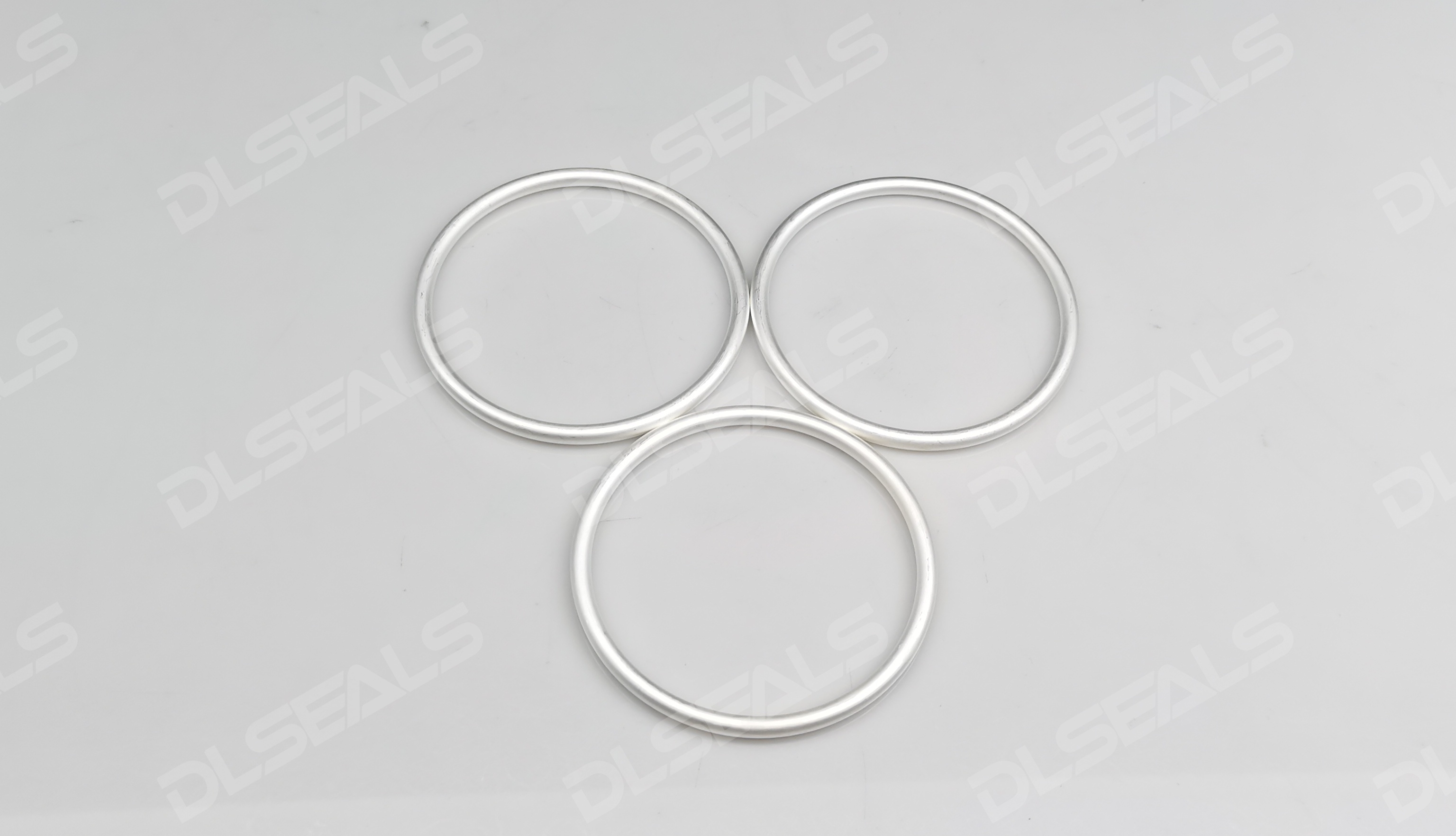Hollow O-Rings, with their unique hollow structure design, show significant advantages in sealing scenarios that require low compression permanent deformation, high elastic compensation or shock absorption. The choice of its material directly affects the sealing performance, durability and cost-effectiveness. This article systematically analyzes the common materials and applicable scenarios of hollow O-rings to provide a selection basis for engineering design.
1. Core advantages of hollow O-rings
Compared with solid O-rings, hollow design has the following characteristics:
High elastic compensation: The hollow structure can absorb greater deformation (compression rate can reach more than 50%) and adapt to dynamic displacement or vibration conditions;
Low contact stress: Reduce pressure loss on the sealing surface and extend equipment life;
Lightweight: Reduce material consumption, suitable for weight-sensitive aerospace equipment;
Heat insulation/vibration isolation: The air cavity can block heat transfer or mechanical vibration.
2. Common materials and their performance comparison
1. Fluororubber (FKM)
Features:
High temperature resistance (-20℃~200℃), oil resistance, chemical corrosion resistance (acid, hydrocarbon solvents);
Hardness range 65~90 Shore A, excellent resistance to compression permanent deformation (150℃×70h deformation rate <15%).
Applicable scenarios:
Fuel system, chemical pump valve, high temperature hydraulic seal;
Hollow seals that need to withstand strong corrosive media (such as concentrated sulfuric acid pipelines).
Limitations: Poor low temperature elasticity and high cost.
2. Silicone rubber (VMQ)
Features:
Ultra-wide temperature range (-60℃~230℃), excellent flexibility;
High biocompatibility (compliant with FDA standards), non-toxic and odorless;
Excellent electrical insulation performance (volume resistivity>10¹⁵ Ω·cm).
Applicable scenarios:
Medical equipment, food-grade seals (such as filling machinery);
High temperature ovens, semiconductor equipment insulation seals.
Limitations: Low mechanical strength, easily pierced by sharp objects.
3. Ethylene propylene diene monomer (EPDM)
Features:
Excellent ozone resistance and weather resistance (outdoor life>10 years);
Resistant to water vapor and polar solvents (such as ketones and alcohols);
High cost performance, hardness range 40~90 Shore A.
Applicable scenarios:
Automobile cooling system, solar water heater seal;
Shock absorption and buffering in hot and humid environments (such as ship equipment).
Limitations: Not resistant to oil and hydrocarbon solvents.
4. Hydrogenated nitrile rubber (HNBR)
Features:
Better oil resistance than NBR, improved temperature resistance (-40℃~150℃);
Resistant to hydrogen sulfide (H₂S) corrosion, outstanding wear resistance.
Applicable scenarios:
High-pressure wellhead equipment in oil and gas fields;
Automobile engine crankcase seal.
Limitations: Higher cost than ordinary NBR.
5. Polyurethane (PU)
Features:
Ultra-high wear resistance (wear loss <0.03 cm³/1.61km);
High mechanical strength (tensile strength >40 MPa), good oil resistance.
Applicable scenarios:
High-pressure hydraulic cylinder piston seal (>30 MPa);
Mining machinery, engineering equipment shock absorber ring.
Limitations: Poor hydrolysis resistance, easy to soften at high temperature (long-term use temperature <80°C).
6. Perfluoroether rubber (FFKM)
Features:
Chemical resistant ceiling (resistant to strong acid, strong alkali, plasma);
Excellent temperature resistance (-25°C~320°C).
Applicable scenarios:
Semiconductor etching machine vacuum chamber sealing;
Nuclear reactor high radiation area sealing.
Limitations: Expensive (cost is 5~10 times that of FKM).
3. Special composite materials and coating technology
1. PTFE coated rubber core
Structure: Outer layer of polytetrafluoroethylene (PTFE) coated with silicone or fluororubber core material;
Advantages: Friction coefficient as low as 0.05, wear resistance and anti-adhesion;
Applications: Precision instrument guide rail seals, oil-free lubrication environment.
2. Metal reinforced hollow O-ring
Structure: Stainless steel spring embedded in silicone or fluororubber cavity;
Advantages: Anti-compression capacity increased by 3 times, resistance to permanent deformation;
Applications: Ultra-high pressure valves (>100 MPa), deep well packers.
3. Conductive/antistatic modification
Technology: Add carbon black, metal powder or graphene filler;
Performance: Adjustable volume resistivity (10²~10⁶ Ω·cm);
Applications: Explosion-proof equipment, electromagnetic shielding seals for electronic components.
4. Key parameters for selection and design recommendations
Core parameters for working condition matching:
Temperature range: The selected material must cover extreme temperatures and reserve a 20% safety margin;
Media compatibility: Refer to ASTM D471 standard for swelling test (volume change rate <10%);
Pressure level: The pressure bearing capacity of hollow structures is usually 50%~70% of that of solid O-rings.
Key points of structural design:
Wall thickness optimization: The wall thickness/outer diameter ratio is recommended to be 1:4~1:6 to avoid collapse or rupture;
Pre-compression rate: Static sealing is recommended to be 15%~25%, and dynamic sealing is reduced to 10%~15%;
Interface processing: Use 45° bevel cut or one-piece molding to avoid weak bonding areas.
Economic considerations:
EPDM or HNBR is preferred for batch applications;
FFKM or composite materials can be selected for extreme working conditions (such as semiconductors and nuclear industries).
5. Typical failure modes and prevention
Failure type Cause Solution
Deformation collapse Insufficient wall thickness or overpressure Increase wall thickness/select metal reinforcement structure
Swelling and cracking of medium Incompatible material and medium Reselect material and conduct immersion test
Low-temperature brittle cracking The glass transition temperature of the material is too high Use silicone rubber or low-temperature FKM instead
Friction and wear Insufficient surface roughness or lubrication failure Use PTFE coating or add lubricant
Conclusion
Material selection for hollow O-rings is a comprehensive discipline that balances mechanical properties, chemical resistance and cost. From corrosion-resistant fluororubber to ultra-flexible silicone, from cost-effective EPDM to top-level FFKM, each material corresponds to specific industrial needs. In the future, with the breakthrough of nano-composite technology and intelligent materials, hollow O-rings will further develop in the direction of functional integration (such as self-sensing and self-repair), providing more reliable sealing solutions for high-end equipment.
Post time: Mar-05-2025

